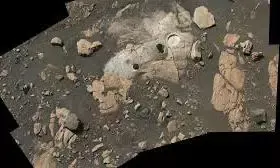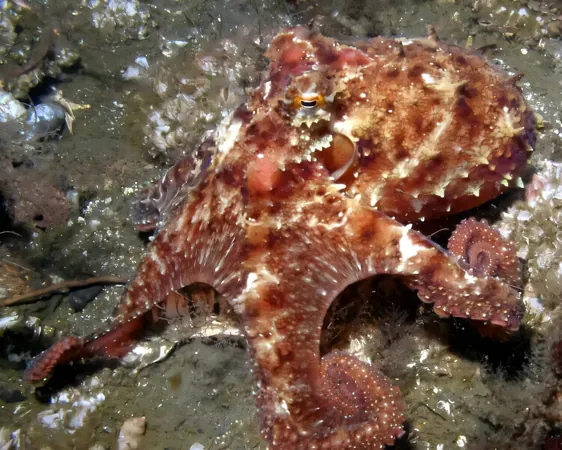
NASA's Perseverance Rover Makes Shocking Discovery of Potential Organic Molecules on Mars!
2024-11-21
Author: Olivia
NASA's Perseverance rover has made a groundbreaking revelation inside Mars' Jezero Crater, detecting intriguing signals indicative of carbon-based molecules that could hint at the tantalizing possibility of ancient life on the Red Planet! This major finding has reignited debates among scientists about Mars hosting life forms in its distant past.
Equipped with the cutting-edge SHERLOC instrument—short for Scanning Habitable Environments with Raman and Luminescence for Organics and Chemicals—the rover has been meticulously scanning the Martian surface. The signals picked up suggest the potential existence of organic compounds, a key ingredient often linked to life. However, scientists are exercising caution and exploring different explanations for these surprising findings, reminding us that the universe often keeps its secrets well-guarded.
SHERLOC relies on two impressive techniques: ultraviolet luminescence and Raman spectroscopy. While luminescence is sensitive to certain signals from organic materials, it's not exclusive to them, meaning that some signals may arise from non-organic origins. In contrast, Raman spectroscopy offers more precise chemical fingerprints, allowing researchers to narrow down the nature of these molecules, although with less sensitivity, making it a balancing act of analysis.
Some experts in the field have suggested that the signals detected may not be biological at all. A revealing study published in Science Advances proposes that these patterns could actually result from non-organic sources, such as imperfections in mineral structures like phosphates and silicates, or even the presence of cesium ions.
Dr. Eva Scheller, a planetary scientist at MIT and co-author of the study, has pointed out the difficulties posed by 'degeneracy' in spectroscopy, where overlapping spectral patterns can lead to misleading interpretations. The original research team is well aware of these complexities and is actively considering alternative explanations that come into play when analyzing Martian geology from millions of miles away.
The Jezero Crater, believed to be an ancient lakebed, is a treasure trove for astrobiological research, providing a rich context for investigating the potential signs of past life. While the discovery of these organic molecules is exciting, it does not provide definitive proof of life. Nevertheless, the crater's dynamic geological history coupled with these findings has added a layer of intrigue to ongoing Mars exploration.
To firmly establish the origins of these carbon-based molecules, experts assert that a Mars Sample Return mission is essential. Such an expedition would allow scientists to analyze samples in Earth-based laboratories, providing a clearer interpretation of whether these compounds have biological origins or are merely abiotic.
Stay tuned as we continue to decode the mysteries of Mars—who knows what else lies hidden beneath its dusty surface? The quest for life beyond Earth has never been more thrilling!









 Brasil (PT)
Brasil (PT)
 Canada (EN)
Canada (EN)
 Chile (ES)
Chile (ES)
 España (ES)
España (ES)
 France (FR)
France (FR)
 Hong Kong (EN)
Hong Kong (EN)
 Italia (IT)
Italia (IT)
 日本 (JA)
日本 (JA)
 Magyarország (HU)
Magyarország (HU)
 Norge (NO)
Norge (NO)
 Polska (PL)
Polska (PL)
 Schweiz (DE)
Schweiz (DE)
 Singapore (EN)
Singapore (EN)
 Sverige (SV)
Sverige (SV)
 Suomi (FI)
Suomi (FI)
 Türkiye (TR)
Türkiye (TR)